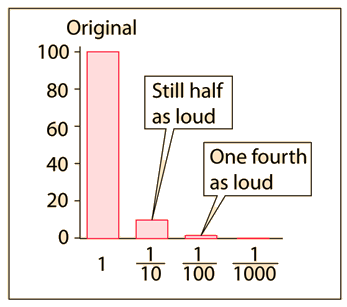The Ear and Soundproofing
|
Soundproofing is rendered more difficult by the way the ear responds to sound intensity. The ear's response is roughly logarithmic, and a commonly used rule of thumb for sound loudness suggests that an offending sound must be reduced by a factor of ten in intensity to be reduced to half as loud. The reduction of the sound power entering a room by a factor of a thousand would certainly seem to be sufficient, but the rule of thumb suggests that its loudness would be one-eighth of the original and still audible. |  |
A reduction by a factor of over a million may in fact be necessary for an intense external sound. Such reductions are typically expressed in decibels, with a factor of a million corresponding to 60 decibels.
Auditorium acoustics
| HyperPhysics***** Sound | R Nave |